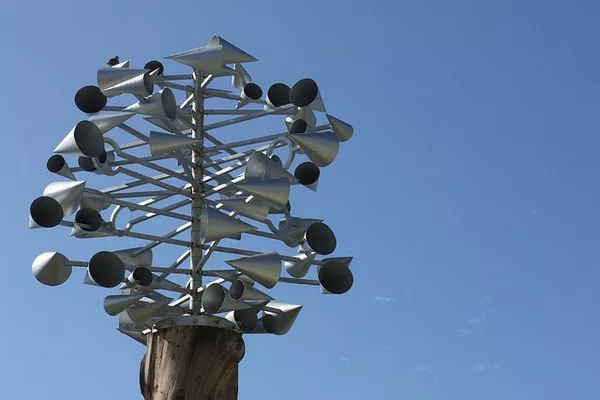In the age of smartphones that can seemingly do it all, from tracking our fitness to managing our finances, the question arises: can these devices also accurately measure wind speed? Anemometers, traditionally used by meteorologists and researchers, have long been the standard for wind speed measurement. However, advancements in smartphone technology have led to the development of applications claiming to turn your phone into a portable anemometer.
The Promise of Smartphone Anemometers
The idea of using a smartphone as an anemometer is enticing. After all, many people carry these devices with them everywhere, making them readily available for impromptu wind speed measurements. Proponents argue that leveraging the built-in sensors, such as the accelerometer and gyroscope, combined with sophisticated algorithms, can provide accurate wind speed readings comparable to traditional anemometers.
Understanding the Technology Behind It
Smartphone anemometer apps typically work by utilizing the device’s sensors to detect movement caused by wind. The accelerometer, which measures acceleration forces, and the gyroscope, which tracks orientation and rotation, are key components. These sensors can detect changes in the phone’s position and movement, which are then analyzed to estimate wind speed.
To improve accuracy, some apps may also use GPS data to account for the phone’s movement through space and time. This helps differentiate between actual wind-induced movements and other factors that could influence sensor readings.
Challenges and Limitations
While smartphone anemometers hold promise, they face several challenges that affect their accuracy and reliability. One major limitation is the sensitivity of the built-in sensors. Smartphone accelerometers and gyroscopes are designed for general purposes such as screen orientation and gaming, not precise scientific measurements like those required for meteorological purposes.
Factors such as calibration errors, environmental conditions, and the quality of the app itself can also impact accuracy. For instance, variations in sensor calibration between different smartphone models can lead to inconsistent readings. Additionally, environmental factors such as vibrations from nearby machinery or buildings can interfere with sensor accuracy, affecting the reliability of wind speed measurements.
Validation and Comparison with Traditional Anemometers
To determine the reliability of smartphone anemometers, several studies have compared their readings with those from traditional anemometers used in meteorology. These studies often find that while smartphone apps can provide a rough estimate of wind speed, they generally lack the precision and consistency of professional-grade instruments.
Traditional anemometers, such as cup, vane, or sonic anemometers, are meticulously calibrated and designed to withstand various environmental conditions. They are equipped with high-precision sensors and are regularly tested and maintained to ensure accurate measurements. In contrast, smartphone sensors, while improving, are still primarily intended for consumer applications rather than scientific use.
Accuracy Concerns and Variability
One of the primary concerns with smartphone anemometers is their variability in accuracy. Factors such as the quality of the phone’s sensors, the algorithm used by the app, and the user’s ability to properly hold the device can all influence the readings. Inconsistent accuracy across different wind speeds and environmental conditions further complicates their reliability.
Studies have shown that smartphone anemometer apps can vary widely in their accuracy. Some may perform reasonably well under certain conditions, while others may struggle to provide even approximate measurements. Users are advised to exercise caution and understand the limitations of these apps before relying on them for critical applications.
Applications and Practical Uses
Despite their limitations, smartphone anemometers have found practical applications in various fields. Outdoor enthusiasts, kite surfers, sailors, and hobbyists often use these apps for recreational purposes where precise measurements are less critical. Farmers and agriculturalists may also find them useful for assessing wind conditions in the field.
In educational settings, smartphone anemometers can serve as valuable tools for teaching basic concepts of wind speed and direction. They provide an accessible way for students to engage with meteorological principles without requiring expensive equipment.
Improvements and Future Directions
As smartphone technology continues to advance, there is potential for improvements in the accuracy and reliability of smartphone anemometers. Manufacturers are increasingly aware of the demand for more sophisticated sensor capabilities, which could lead to better performance in future smartphone models.
Additionally, advancements in sensor calibration techniques and algorithms could enhance the precision of wind speed measurements. Integration with other environmental data, such as temperature and humidity sensors, could further improve the usefulness of smartphone apps in diverse applications.
See Also How Does A Weather Barometer Work
Conclusion
While smartphone anemometers offer convenience and accessibility, they currently cannot replace traditional anemometers in situations where precise and reliable measurements are crucial. Their accuracy is generally suitable for casual or non-critical use, but professionals and researchers should continue to rely on specialized equipment for meteorological and scientific purposes.
As technology progresses, smartphone anemometers may become more accurate and reliable, expanding their potential applications. However, for now, understanding their limitations and using them appropriately remains essential for anyone considering using their phone as an anemometer.
Related Topics


